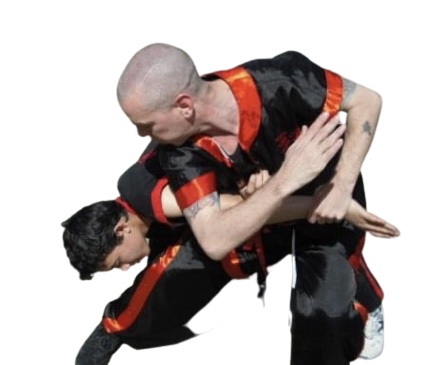Wing Chun vs Krav Maga: Which Style is More Effective for Real-Life Self-Defense?
By Maurice Novoa a master under the Yuen Kay Shan, Ip Man and Pan Nam lineages.
Introduction:
Wing Chun and Krav Maga are two highly effective martial arts styles known for their practicality and efficiency in real-life self-defense situations. While they have distinct origins and training methods, both styles share common goals of equipping practitioners with the skills needed to defend themselves effectively. By examining their unique features and understanding how they complement each other, individuals can develop a comprehensive self-defense skill set.
Wing Chun, originating from southern China, is a traditional Chinese martial art that focuses on close-range combat and emphasizes economy of motion. It is known for its efficiency, directness, and simplicity in techniques. Practitioners learn to redirect and control an opponent’s force while delivering precise strikes and maintaining a strong defensive structure. The style emphasizes footwork, centerline theory, and the use of simultaneous attack and defense.
Krav Maga, on the other hand, is a modern self-defense system developed in Israel. It combines techniques from various martial arts, including boxing, wrestling, and judo, to create a practical and effective method for real-life combat situations. Krav Maga focuses on rapid, instinctive responses to attacks, with an emphasis on neutralizing threats quickly and efficiently. Its techniques include strikes, kicks, joint locks, and defensive maneuvers designed to disable an opponent effectively.
While Wing Chun and Krav Maga have different approaches, they can complement each other in self-defense training. By integrating certain aspects of each style, practitioners can enhance their overall skill set. Here are some key areas where the two styles can intersect:
1. Striking Techniques:
Wing Chun’s emphasis on precise and efficient strikes can enhance a Krav Maga practitioner’s striking abilities. By incorporating Wing Chun’s focus on proper body alignment, balance, and generating power from the centerline, Krav Maga practitioners can improve the effectiveness and accuracy of their strikes. Wing Chun’s training methods, such as the wooden dummy and focus mitt drills, can provide valuable tools for refining striking techniques and developing speed and power.
2. Close-Range Combat:
Wing Chun’s close-quarters combat techniques can be valuable in Krav Maga training plus its trapping and grappling techniques can help Krav Maga practitioners control an opponent’s limbs, create openings for strikes, and neutralize threats in close-range encounters. The sensitivity training inherent in Wing Chun, such as Chi Sao drills, can improve a practitioner’s ability to read an opponent’s movements, maintain contact, and respond effectively.
3. Footwork and Agility:
Wing Chun’s focus on footwork and mobility can benefit Krav Maga practitioners by improving their ability to control distance, evade attacks, and maneuver in combat situations. Wing Chun’s training methods, such as the practice of shifting and pivoting, can enhance a practitioner’s agility, balance, and quick direction changes. Incorporating Wing Chun footwork principles can help Krav Maga practitioners become more elusive, effectively navigate their environment, and gain a tactical advantage.
4. Mental Conditioning:
Both fighting styles place a strong emphasis on mental conditioning and situational awareness. The mental resilience cultivated in Wing Chun, such as focus, discipline, and calmness under pressure, can benefit Krav Maga practitioners in maintaining composure during high-stress encounters. Similarly, Krav Maga’s training methods that simulate real-life scenarios and expose practitioners to stressful situations can strengthen their mental fortitude and decision-making skills.
5. Multiple Attacker Scenarios:
Wing Chun’s training methods, which include drills and techniques designed to address multiple attackers, can provide valuable insights for Krav Maga practitioners. Wing Chun’s emphasis on simultaneous attack and defense, maintaining a strong centerline, and quickly incapacitating opponents can be applied to situations where a practitioner is faced with multiple assailants. By incorporating Wing Chun principles into Krav Maga training, practitioners can enhance their ability to deal with multiple threats effectively.
Conclusion
In conclusion, the two styles are two highly effective martial arts styles with distinct features and training methodologies. While each style has its strengths, they can be integrated to create a comprehensive self-defense system. By combining Wing Chun’s precise striking techniques, close-range combat strategies, footwork principles, mental conditioning, and insights into multiple attacker scenarios with Krav Maga’s practical techniques and focus on rapid responses, practitioners can develop a well-rounded skill set that is effective for real-life self-defense situations. Ultimately, the key is to adapt and integrate techniques from both styles based on individual strengths, preferences, and the specific context of self-defense encounters.

